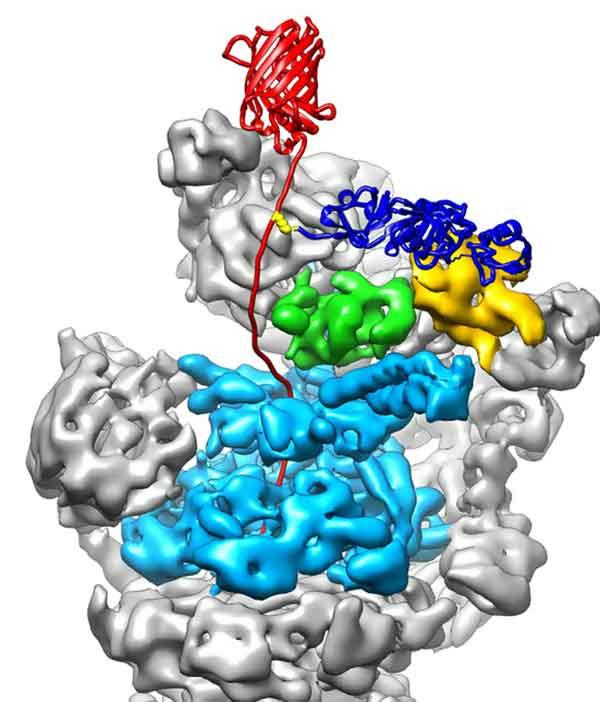Three-Drug Combination Extends Survival for Patients with Multiple Myeloma
, by NCI Staff
For newly diagnosed patients with multiple myeloma who plan to delay autologous stem cell transplantation, adding the targeted therapy bortezomib (Velcade®) to a two-drug therapy improves how long they live compared with the doublet therapy alone, a new study has shown.
As part of first-line therapy, some patients with multiple myeloma may undergo a stem cell transplant. But because the procedure is time consuming and may cause serious side effects, patients may opt to delay it or to not have one at all.
For patients who don’t intend to have a stem cell transplant immediately after diagnosis, this randomized phase III clinical trial is the first to directly assess the benefits of adding bortezomib to a standard two-drug therapy, lenalidomide (Revlimid®) and dexamethasone.
“This study solidifies the suspicion that the triplet therapy is superior to the doublet,” said study author Angela Dispenzieri, M.D., of the Mayo Clinic in Rochester, Minnesota. “It demonstrates the value of the triplet therapy for patients who are not going directly to transplant.”
“Most of the myeloma community suspected this outcome,” said Dickran Kazandjian, M.D., a Food and Drug Administration/NCI clinical investigator from the Medical Oncology Service in NCI’s Center for Cancer Research, who was not involved in the study. “Based on these study results, the triplet therapy should be the standard of care for newly diagnosed multiple myeloma,” he added.
The trial findings were published online December 23 in The Lancet.
Three is Better Than Two
In general, Dr. Dispenzieri said, otherwise healthy patients with multiple myeloma who are 75 years old or younger are considered to be eligible for a stem cell transplant, whereas older patients are typically considered transplant ineligible because they are weaker and may have other health issues.
But some transplant-eligible patients may opt to delay the procedure because of its potential toxicity and the risk of developing a second primary cancer, especially when highly efficacious drug regimens are becoming another option, explained Dr. Kazandjian.
Previous early-stage clinical trials demonstrated the safety and efficacy of the combination of bortezomib, lenalidomide, and dexamethasone for the first-line treatment of multiple myeloma. In these trials, however, most patients went on to have a stem cell transplant and it was not possible to directly compare the doublet therapy to the three-drug combination.
“There really wasn’t very good data for what happens if you use this triplet therapy without transplant," Dr. Dispenzieri said. "Is it really better than the doublet therapy? And there was concern that there might be more toxicity. We conducted our trial to try to answer those questions.”
The open-label trial, led by Brian G. M. Durie, M.D., of the Cedars-Sinai Samuel Oschin Cancer Center, enrolled 525 patients with multiple myeloma who had not received previous cancer treatment and who did not plan to immediately have a stem cell transplant.
Patients were randomly assigned to receive the three-drug combination in eight 3-week cycles or the two-drug therapy in six 4-week cycles. After these regimens were completed, patients in both groups were treated with lenalidomide and dexamethasone as maintenance therapy.
At the time of their analysis, the investigators found that, compared with the two-drug therapy, treatment with the three-drug combination extended patients’ median progression-free survival—the primary endpoint of the trial—by 13 months, from 30 months with two-drug therapy to 43 months with the three-drug combination. The secondary endpoint, overall survival, improved by 11 months, from a median of 64 months to 75 months.
Furthermore, they found that treatment with the three-drug combination generated deeper responses—meaning more patients had very good partial responses, complete responses, as well as complete responses as measured by more sensitive tests, such as DNA sequencing.
“The deeper the response, the more likely a patient is to have a longer progression-free survival and overall survival,” explained Dr. Kazandjian.
Approximately 10% of patients enrolled in the trial underwent a stem cell transplant after the study. When the investigators excluded these patients from their analysis, the three-drug combination still showed an 11-month improvement in overall survival compared with the two-drug therapy.
Implications for Treatment
More patients in the three-drug combination group reported high-grade adverse events, the majority of which were numbness and gastrointestinal issues. These side effects may be due to the intravenous delivery of bortezomib, which was standard at the time of the trial’s inception, the researchers wrote. Subcutaneous delivery of bortezomib, the current standard method, may reduce the incidence of nerve issues, they explained.
Based on evidence from earlier trials, about half of patients with multiple myeloma who plan to have a stem cell transplant are already treated with this three-drug regimen, Dr. Dispenzieri said.
“Most patients who are older than 75 and unlikely to have a transplant are treated with the doublet therapy. But the current trial challenges what the standard first-line therapy for this population and their younger peers should be,” she added.
And researchers are continuing to test whether other combination treatments may be even more effective.
For example, in a single-arm phase II trial, Dr. Kazandjian and his colleagues found that treatment with lenalidomide, dexamethasone, and carfilzomib (Kyprolis®) generated deep responses in patients with newly diagnosed multiple myeloma. And an ongoing phase III trial is comparing outcomes of patients treated with lenalidomide and dexamethasone plus either carfilzomib or bortezomib.
These studies suggest that the particular combination of a proteasome inhibitor (like bortezomib or carfilzomib), an immunomodulating agent (like lenalidomide) and a steroid (like dexamethasone) may have enhanced activity against multiple myeloma, said Dr. Kazandjian.
In addition, another ongoing trial is testing the efficacy of adding another drug, daratumumab (Darzalex®), to the bortezomib, lenalidomide, and dexamethasone combination.
